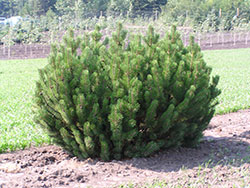by J.E. Klett and Lisa Mason* (10/20)
Quick Facts…
- Most evergreens prefer full sun; some will tolerate partial shade.
- When selecting evergreens, consider available space, soil and site conditions, and weather factors.
- Evergreens have different soil moisture preferences. Group drought-tolerant types separately from those that require more moisture.
- All evergreens benefit from mulches. All need sufficient water to become established after transplanting.
- Most evergreens benefit from supplemental water during dry, warm or windy periods from November to March.
Narrowleaf evergreen (conifer) trees give a landscape year-round interest, color and texture. Conifer trees are versatile and can be used as specimens, hedges, privacy screens, backdrops for smaller flowering plants, or as a windbreak planted on the north and west to deflect or intercept winter winds. (See fact sheet 7.225, Landscaping for Energy Conservation.)

“Evergreen” refers to trees that normally retain most of their foliage (needles) through the winter. Such trees, however, do not retain all of their needles indefinitely. For example, ponderosa pine drops needles each year that are three years old. These older needles are the innermost ones toward the main trunk. Younger needles, further out on the branch, are retained until they are three years old. This annual browning and drop of innermost, older needles can cause concern, but it is a natural process.
Selection
Examine the intended planting space for good soil drainage, adequate sunlight and sufficient space to accommodate the desired evergreen tree at its mature size. Allow for clear access to driveways, sidewalks and entryways. Determine whether the tree’s growth will affect any overhead utility lines. Before planting, call the utility companies’ hotline (dial 811) to mark the location of any underground lines to avoid damaging them while digging. For other considerations on species selection and location, refer to CSU Extension Garden Note #631 Tree Placement: Right Plant, Right Place, and #632, Tree Selection: Right Plant, Right Place.
In smaller sites, consider smaller trees or shrubs. (See 7.418, Small Deciduous Trees, 7.414, Evergreen Shrubs, 7.415, Deciduous Shrubs, or 7.427 Columnar and Fastigiate Trees for CO Landscapes) Consider dwarf conifers for limited space areas. If there is sufficient space, use several kinds of evergreens to add variety to the landscape.
Watering and Maintenance
The following list (Table 1) indicates the relative moisture needs of evergreens. Plant species with similar water needs in the same general area – do not mix trees with widely different water needs.
Evergreens that need less moisture may work well on slopes. All evergreens usable in Colorado prefer well-drained soils. Avoid planting them in swales or poorly drained, soggy areas. Evergreens that need less moisture may not do well in lawn areas because of the amount of water needed to sustain the lawn. Even for those trees that need more moisture and are compatible with lawn watering, leave the planting area free of sod to allow for good root development. An organic mulch is recommended over the entire planting area. (See 7.214, Mulches for Home Grounds, and CSU Extension Garden Note #658, Mulching Trees.
Most evergreens growing in Colorado landscapes, whether recently transplanted or well-established, benefit from supplemental water during winter dry spells. Often, such spells are accompanied by drying winds or unseasonably warm temperatures, further emphasizing the need for watering. (See 7.211, Fall and Winter Watering, CSU Extension Garden Note #657, Watering Mature Trees, and 7.240, Watering a Home Landscape During Drought).
For gardeners above 6,000 feet, some of the plants listed in Table 1 are not adapted. Refer to 7.423, Trees and Shrubs for Mountain Areas for specific recommendations. Refer to 7.421, Native Trees for Colorado Landscapes and 7.422, Native Shrubs for Colorado Landscapes for native evergreens.
Planting Evergreen Trees
Growing a healthy evergreen tree begins with proper planting techniques. Mistakes such as planting a tree too deep are common in the landscape, and lead to trunk-girdling roots which can shorten the life span of the tree significantly. Proper planting techniques promote rapid root growth while reducing water stress from the harvest and planting process. For more information, refer to CSU Extension Garden Note #633, The Science of Planting Trees, #636, Tree Planting Steps, #635, Care of Recently Planted Trees, #634, Tree Staking and Underground Stabilization, and fact sheet 2.926, Healthy Roots and Healthy Trees.
Table 1: Recommended evergreen trees for Colorado.

*J. Klett, Extension Specialist, Colorado State University; and L. Mason, Horticulture Agent, Colorado State University Extension; R.A. Cox, Retired Horticulture Agent, Colorado State University Extension 4/05. Revised 10/20.
Go to top of this page.





